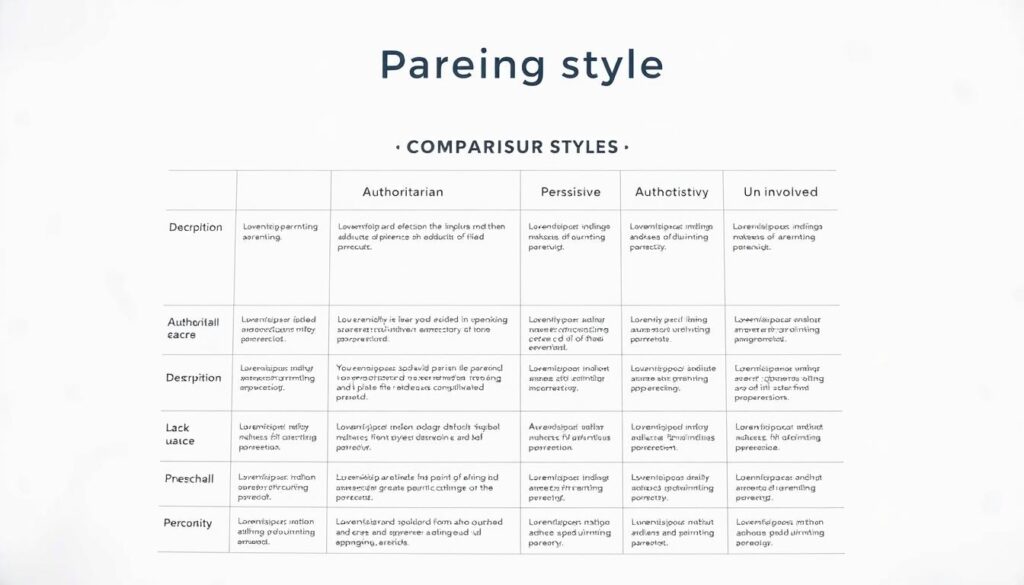Raising kids today feels like walking a tightrope, especially when it comes to Modern Parenting for School-Age children. Between screen time battles and packed schedules, many parents wonder if they’re doing enough. One mom recently shared, “Dinner used to be our sacred time—now it’s a race between homework and TikTok.”
The digital age reshapes how families connect. Kids juggle school pressures, social media, and extracurriculars. Meanwhile, parents balance old-school values with new-world demands. It’s not just about rules—it’s about raising resilient, kind humans in a fast-changing world.
This guide unpacks seven strategies to navigate these hurdles. From fostering emotional smarts to redefining success, we’ll explore practical steps to strengthen your family’s foundation.
Key Takeaways
- Tech and tradition can coexist with clear boundaries
- Emotional intelligence matters as much as grades
- Over-scheduling hurts more than it helps
- Flexible approaches adapt to growing kids
- Real connection beats picture-perfect moments
Understanding Modern Parenting Styles
The way we raise kids has transformed dramatically in just one generation. Gone are the days of one-size-fits-all rules. Today’s parenting styles reflect deeper insights into child development and emotional needs.

Traditional vs. New-Age Parenting: Key Differences
Authoritarian “because I said so” approaches often backfire. Neuroscience shows kids respond better to collaboration. A 2023 study found that families using dialogue over demands saw 40% fewer power struggles.
Permissive styles, while loving, can lack boundaries. Case studies reveal kids from overly lenient homes often struggle with self-discipline. As Alice, 25, recalls:
“My parents never said ‘no’—I had to learn limits the hard way.”
Why Authoritative Parenting Works Best Today
This style blends clear guidelines with warmth. Think: “Homework before screens, but let’s problem-solve together if you’re stuck.” The secure base theory confirms kids thrive when they feel supported yet independent.
New-Age methods add a global twist, teaching empathy and cultural awareness. One teacher noted, “Kids raised this way adapt faster to diverse classrooms.”
Embracing Technology Without Losing Balance
Screens dominate our world, but they don’t have to rule family life. The key lies in intentional choices—tools that connect without overwhelming, and rules that flex as kids grow.

Smart Tools for Responsible Tech Use
Devices like the Cosmo JrTrack Watch offer a middle ground. It handles calls and texts but skips social media—perfect for younger kids. GPS tracking keeps them safe, while school-safe modes prevent distractions.
Em, a mom of two, shares her approach: “We started with 30 minutes of educational apps at age 6. By 10, they earned ‘tech tiers’—more freedom after chores.”
Setting Healthy Screen Time Boundaries
The AAP recommends:
- Ages 6–12: 1–2 hours of non-school screens daily
- Teens: Consistent limits on entertainment use
Try a digital sunset—no screens 1 hour before bed. One study linked this to better sleep and improved social skills.
Balance isn’t about bans. It’s about teaching kids to navigate the digital world while thriving in real life.
Building Emotional Intelligence in Your Child
Emotional intelligence isn’t just a buzzword—it’s the foundation of resilience. Kids who master self-awareness and empathy handle setbacks better, from playground conflicts to academic stress. Research links these skills to higher academic performance and stronger friendships.
Teaching Kids to Identify and Express Feelings
Help your child name emotions early. Try the “feeling weather report”: At dinner, ask, “Were you sunny, stormy, or cloudy today?” This builds their emotion vocabulary naturally.
For younger children, play emotion charades. Act out “frustrated” or “excited” and guess together. One mom shared, “My 7-year-old now says ‘I’m fizzy!’ when overwhelmed—it’s our cue to pause.”
How Your Own Emotional Health Impacts Their Growth
A parent’s calm response teaches regulation. Studies show 68% of kids mirror their family’s coping styles. Therapist-approved script for tough moments: “I’m feeling [X], so I’ll take three breaths. Want to join me?”
Mindfulness tricks work too. Try the 5-step sibling conflict fix:
- Pause the argument
- Name feelings (“You’re both mad”)
- Listen without fixing
- Brainstorm solutions
- Pick one to try
Core values like empathy grow best when modeled daily. Make it a process, not a lecture.
Encouraging Independence Through Everyday Choices
Small choices today build tomorrow’s confident adults. When kids practice decision-making early, they develop problem-solving muscles that last a lifetime. A study of 500 families found those giving age-appropriate responsibilities had 30% fewer homework battles by middle school.
Age-Appropriate Tasks That Build Confidence
Responsibility grows step by step. First grader Maya beams when recounting her “big kid job”—sorting laundry lights from darks. By fifth grade, her brother manages a weekly meal contribution chart with minimal reminders.
| Grade Level | Daily Tasks | Weekly Milestones |
|---|---|---|
| K-2nd | Pack snack, water plants | Set table 3x/week |
| 3rd-5th | Prepare lunch, walk dog | Plan one family activity |
Try a “choice menu” for after-school time. Options might include:
- Homework before screens or 30 minutes of reading first
- Wednesday chore day or Saturday morning blitz
When Mistakes Become Teachable Moments
That infamous “mac and cheese” incident proved pivotal for the Reynolds family. Eight-year-old Jaden insisted on cooking solo—resulting in a smoky kitchen but priceless learning. His mom recalls:
“We asked what he’d change next time instead of taking over. Now he’s our safest kitchen helper!”
School counselors recommend these failure debrief questions:
| Situation | Growth Question |
|---|---|
| Forgot homework | “What reminder system could work better?” |
| Missed the bus | “How will you wake up earlier tomorrow?” |
Structured homes see faster skill mastery—but some flexibility matters. Parents who allow natural consequences (like a cold lunch if forgotten) report kids needing 43% fewer rescues within two months.
Modern Discipline: Moving Beyond “Because I Said So”
Discipline today isn’t about control—it’s about connection. Research shows children learn best when rules make sense to them. As child psychologist Dr. Luiza puts it:
“Effective discipline teaches life skills, not just obedience.”
Using Intrinsic Motivation Over Rewards
Sticker charts work short-term, but the “helper’s high” lasts longer. Try connecting actions to natural outcomes:
- “When your toys have homes, you can find them faster for playtime.”
- “Finished homework means more free time before dinner.”
The magic ratio? Three positive comments for every correction. Teacher-approved phrases include:
“You remembered your lunch today—that’s responsibility!”
Firm but Flexible Boundary-Setting
Tech negotiations need clear expectations. Try this script:
| Situation | Response |
|---|---|
| “All my friends have unlimited TikTok!” | “Our rule is 30 minutes. Let’s discuss adjustments at Friday’s family meeting.” |
Natural consequences teach better than lectures:
- Forgot jacket? Let them feel the chill (safely)
- Left lunch? Offer healthy snacks, not a rescue delivery
Quarterly family meetings keep rules relevant:
- Review what’s working
- Adjust one outdated rule
- Vote on a new responsibility system
One dad shared: “Our ‘re-do’ technique changed everything. When rules get broken, they practice the right way immediately.”
Navigating Hidden Challenges of Modern Parenting
Behind every family’s routine lies unseen struggles that shape childhood. While soccer practices and homework dominate conversations, quieter battles with burnout and digital safety often go unaddressed. These challenges require new tools for today’s families.
Combatting Over-Scheduling and Burnout
School counselor Mia Torres sees the effects of packed calendars daily: “Kids arrive exhausted before the bell rings. We’ve created a generation of professional children.” Her activity audit helps families find balance:
- Color-code weekly schedules (red=essential, yellow=optional)
- Keep at least 2 weeknights commitment-free
- Rotate extracurriculars by season, not semester
The matrescence phenomenon affects parents too. As identities shift, self-care becomes vital. Try these therapist-approved strategies:
| Burnout Sign | Quick Reset |
|---|---|
| Short temper | 5-minute solo walk |
| Decision fatigue | Pre-planned “easy nights” |
Managing Social Media and Digital Consent
Despite COPPA rules, 72% of 8-12-year-olds use social platforms. Digital citizenship starts at home with clear agreements. The Smith family’s contract includes:
- No accounts before age 13 (per platform rules)
- Parent follows any approved accounts
- Weekly privacy check-ins
Sharenting poses unique concerns. Instead of public posts, consider:
- Private photo vaults with grandparent access
- Annual “clean-up” of old images
- Asking kids’ permission before posting
“My 10-year-old asked me to delete her toddler photos from Instagram. It was her digital footprint too.” —Mark, father of two
School cyber safety programs teach valuable lessons, but family conversations make them stick. Regular check-ins about online life keep communication open in our connected world.
Conclusion: Raising Resilient Kids in a Fast-Paced World
Success isn’t about perfect moments—it’s about consistent effort. Over weeks, small changes like tech boundaries and emotion coaching compound. One mom noted, “We celebrate ‘better’ not ‘best’—it takes pressure off everyone.”
The secure base theory proves kids thrive with reliable support. Whether using Cosmo JrTrack for safer screen time or holding family meetings, flexibility matters. Parents report biggest wins when focusing on progress, not perfection.
For deeper dives, explore:
- Dr. Becky Kennedy’s Good Inside (emotional tools)
- Local school parenting workshops
- The OurPact app for tech balance
Your child’s needs are unique. Start with one strategy, track what works, and adjust. Ready to build your family’s action plan?





